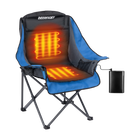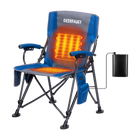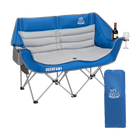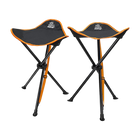Monocrystalline vs. Polycrystalline vs Thin-Film Solar Panels: Difference, Pros and Cons, Products and More!

Tapping into the sun's power for eco-friendly energy is becoming quite a trend among RV lovers, campers, and homeowners. But the million-dollar question is - which solar panel type suits your needs best? Fear not! We've prepared an all-inclusive comparison guide to help you tell the differences between Monocrystalline, Polycrystalline, and Thin-film solar panels.
Each carries its own set of pros and cons in terms of efficiency, cost, lifespan, and looks. By getting a handle on these crucial differences, you'll be well-equipped to make a savvy decision that matches your energy requirements, budget, and personal taste. So, let’s dive in to gather some priceless insights that will fuel your transition to green energy.
What Are Monocrystalline, Polycrystalline, and Thin-Film Solar Panels?
Monocrystalline Solar Panels
Sporting a sleek, dark aesthetic and remarkable efficiency, Monocrystalline solar panels are a popular choice for solar energy enthusiasts.
The name "monocrystalline" comes from the single-crystal silicon used in their production, which leads to more efficient electron movement, leading to enhanced energy conversion. The efficiency of Monocrystalline solar panels generally ranges from 15-20%, placing them as the most competent type on the market. Thanks to this trait, you'll need fewer Monocrystalline solar panels than Polycrystalline ones to generate the same amount of electricity.
Additionally, Monocrystalline solar panels are known for their long lifespan. Many manufacturers back this up by offering a 25-year output warranty on their Monocrystalline products, reinforcing their reliability and durability.
Still, it's worth noting a few drawbacks before you invest. Monocrystalline panels tend to cost more than polycrystalline solar panels due to their intricate manufacturing process. They also may not perform as well under shaded or low-light conditions, unlike some other varieties. Plus, they could experience a slight drop in efficiency when exposed to high temperatures.
Despite these potential downsides, the high-efficiency rates and impressive longevity of Monocrystalline panels have made them a favored choice. When considering their long-term benefits, the upfront investment in these top-tier panels can be well worth it.
So, if you're looking to optimize your renewable energy resources with a reliable, efficient solution, monocrystalline solar panels might be just what you're searching for.
Polycrystalline Solar Panels
Polycrystalline solar panels are recognizable for their blueish tint and have a more distinct, textured look compared to the sleek design of Monocrystalline solar panels. These panels are manufactured by melting multiple silicon fragments into a unified panel.
A major advantage of Polycrystalline solar panels is their affordability compared to Monocrystalline alternatives. Besides, Polycrystalline solar panels perform better in lower light conditions compared to Monocrystalline panels. They can generate more electricity on cloudy or overcast days, providing a more consistent year-round energy supply.
However, the efficiency of Polycrystalline solar panels tends to be lower, usually ranging between 13-17%. This translates to they need more space for the same power output, given their lower efficiency as compared to Monocrystalline solar panels.
Nonetheless, if you're on a budget, Polycrystalline solar panels could be an excellent choice. Their affordability and versatile design make them a popular option for many homeowners looking to harness solar energy on a budget.
Thin-Film Solar Panels
Thin-film solar panels offer a modern and streamlined look. They are crafted by depositing a thin layer of semiconductor material on a substrate such as glass or metal. This manufacturing process makes the thin-film solar panels the most lightweight, flexible, and crack-resistant for use. Thin-film solar panels boast a much lighter and bendable design compared to their crystalline equivalents. As a result, these flexible thin-film solar panels can be seamlessly installed on any surface, including your curved RV roof.
Despite their advantages, thin-film panels tend to have lower efficiency ratings when measured against crystalline silicon solar panels. Consequently, they require a larger space to generate an equivalent amount of electricity. Meanwhile, thin-film solar panels are more expensive than their Monocrystalline and Polycrystalline counterparts.
Monocrystalline vs. Polycrystalline Solar Panels vs. Thin-Film Solar Panels: Key Differences
Monocrystalline Solar Panels Are the Most Efficient.
Monocrystalline solar panels have a distinct edge when it comes to efficiency. Thanks to their single-crystal structure, they allow for smoother electron movement, leading to superior energy conversion and efficiency rates. At BougeRV, we even offer bifacial Monocrystalline solar panels that deliver 30% more solar output than standard models that generate maximum solar power while minimizing space needs.
However, it's worth noting that their efficiency can suffer significantly under shaded or low-light conditions.
Monocrystalline Solar Panels Are More Expensive Than Polycrystalline Solar Panels.
While Monocrystalline solar panels boast superior efficiency, this comes at a cost. These panels are typically more expensive than their Polycrystalline counterparts. This is due to the complex manufacturing process involved in producing the high-purity silicon used in these panels. So, while they may deliver better efficiency, they also require a higher initial cost.
Monocrystalline Solar Panels and Polycrystalline Have Long Lifespan.
Both Monocrystalline and Polycrystalline solar panels are built to last. They both have extended life spans, often backed by output warranties of 25 years or more. This durability makes them an excellent long-term investment if you’re looking to switch to solar power. Despite the initial cost, the long lifespan and efficiency of these solar panels can result in significant savings over time.
Which Is Better, Monocrystalline or Polycrystalline?
When it comes to choosing between Monocrystalline and Polycrystalline solar panels, it ultimately depends on factors like your budget, available installation space, and efficiency requirements.
Monocrystalline solar panels are typically the preferred choice when efficiency and space-saving are prime considerations. Known for their high-efficiency rates, these panels deliver maximum power output in a smaller area, making them ideal for RVs, tiny homes, and sheds with limited space.
On the contrary, if cost-effectiveness is more critical to you, Polycrystalline solar panels could be the perfect fit. While they may not match up to the efficiency level of their Monocrystalline counterparts, they serve as a more affordable solution for larger installations where space is not a limiting factor.
How to Select the Right Panels for Your System?
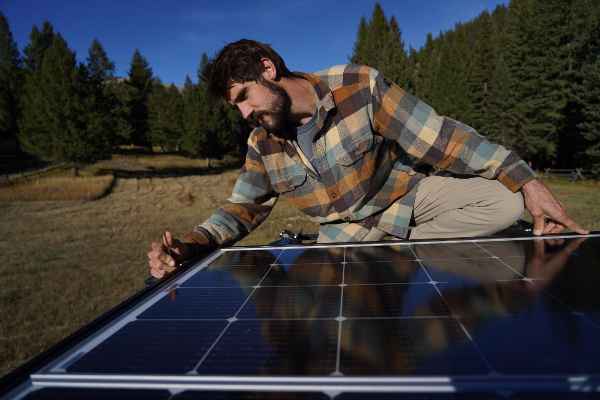
Although you've grasped the distinctions between monocrystalline, Polycrystalline, and thin-film solar panels, picking the perfect one from a sea of options for your solar system might still be challenging. But fret not! Let's break down the selection process further by considering factors like panel quality, available space, budget, long-term goals, etc. Ready to dive in? Here we go!
1. Efficiency Rating
Choosing the right solar panels starts with understanding efficiency ratings. This figure tells you how much of the sunlight that hits the panel gets turned into usable electricity. The higher the efficiency rating, the more power you get from fewer solar panels. If you're looking to outfit a smaller space, like an RV or a home with limited roof area, high-efficiency Monocrystalline solar panels are the way to go.
Most residential solar panels on the market have efficiency ratings between 15-20%. And, you can even get BougeRV Monocrystalline solar panels with an efficiency rate reaching up to 23.5%.
2. Solar Panel Type
As mentioned, Monocrystalline panels top the efficiency charts, but their price is also higher than Polycrystalline solar panels. Thin-film panels, on the other hand, hold the title for being the most costly yet offering flexibility for various surfaces.
However, if you're searching for a balance between cost and efficiency, then Polycrystalline solar panels might just be your solar energy sweet spot!
3. Quality and Longevity
High-quality solar panels will last longer and generate more electricity over their lifetime. Therefore, invest in solar panels from reputable brands with proven track records and offer extensive warranties. It's also essential to ensure that your solar panels can withstand weather conditions specific to your location. For instance:
-
Snowy regions: Living in northern states such as Minnesota, North Dakota, and Alaska, go for Monocrystalline and thin-film solar panels that can bear substantial weight and cold temperatures to prevent damage from snow. Here's a cool tip - opt for darker-colored panels, they absorb more sunlight, helping to melt off the snow faster!
-
Coastal areas: If you're living in coastal areas like Florida, California, or the Gulf Coast, you'll likely deal with high humidity, salty air, and the occasional hurricane. These factors can be tough on solar panels. So, it's crucial to choose solar panels with a high resistance to corrosion and strong wind.
-
High-temperature states: Living in desert states such as Arizona, New Mexico, and Nevada, where temperatures can soar above 100 ℉, heat-resistant solar panels are essential. Excessive temperature can reduce the efficiency of solar panels, especially that of Monocrystalline solar panels. Particularly buy heat-resistant solar panels if you are located in this kind of state.
-
High-temperature states: In desert states like Arizona, New Mexico, or Nevada, where the temperature can rocket over 100 ℉, it's vital to have Monocrystalline or thin-film solar panels that can take the heat. Intense temperatures can reduce the efficiency of your solar panels, especially if you've got Monocrystalline ones. So, if you're kicking it in these kinds of states, make sure you invest in solar panels built to withstand the heat wave!
-
Hail-prone Areas: States like Texas, Oklahoma, and Kansas frequently suffer from hailstorms, so thin-film solar panels or Monocrystalline solar panels with robust glass casing can withstand the impact of falling hailstones.
4. Space Constraints
When your setting-up space is more 'tiny home' than 'Texas ranch' - think compact rooftops or nomadic van life - Monocrystalline solar panels are your go-tos. With their superior efficiency, you'll need fewer of these power players to generate the same amount of electricity as Polycrystalline panels.
And when it comes to RVs or homes with curvy, uneven rooftops, nothing beats the flexible thin film solar panels. They bend to your will, install on any surface, and carry far less weight than their crystalline silicon counterparts.
5. Your Budget
Polycrystalline panels are generally more affordable than their Monocrystalline mates. But don't be too quick to count out the costlier Monocrystalline solar panels, think about the long game. The efficiency benefits of Monocrystalline panels could see the initial costs being clawed back over time.
Besides, Polycrystalline solar panels might not pack as much power, potentially landing you with replacement costs. When you're crunching the numbers, remember to factor in everything from mounting hardware and inverters to installation charges and potential upkeep costs.
6. Aesthetic Preference
Suppose you have a tiny or RVs where space is at a premium, you may often prefer compact, sleek solar panels that don't detract from the overall look. In this case, Monocrystalline panels and thin film solar panels may be the better choice. Their dark color blends in well with the roof, creating a sleek and seamless appearance. On the flip side, Polycrystalline panels featuring a light blue color may not be as visually appealing.
By understanding the factors above and doing a bit of research, you can find the ideal set of solar panels for your system that not only meet your energy needs but also match your budget and aesthetic preference. At BougeRV, we offer highly efficient Monocrystalline solar panels as well as 360° bendable thin-film solar panels. Take a look at our store to learn more.
Best Monocrystalline Solar Panels From BougeRV

BougeRV offers a range of high-quality options including Monofacial and bifacial solar panels for outdoor camping and residential use. Browse our collections to find the ideal monocrystalline panels suitable for your needs.
- Best affordable Monocrystalline solar panels: BougeRV 100W 12V 9BB Mono Solar Panel
- Best efficient Monocrystalline solar panels: BoougeRV bifacial 200W 12V 9BB Mono Solar Panel
- Best high-watt solar panel for residential use: BougeRV 400W 12V 10BB Mono Solar Panel
Explore more of BougeRV’s efficient Monocrystalline solar panels based on size and cost.
Best Thin-Film Solar Panels From BougeRV
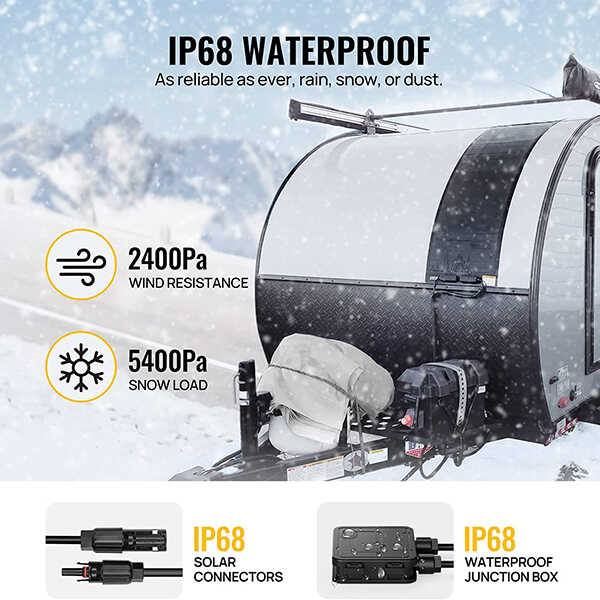
If you are interested in thin-film solar panels, BougeRV also offers a variety of reliable and efficient options. Explore our thin-film solar panel collection to find the best lightweight thin-film panels for your RVs, boat events, and home.
Conclusion
That's the end of our solar panel showdown! We've powered through the differences, advantages, and disadvantages of Monocrystalline, Polycrystalline, and Thin-film solar panels. Notice, there's no one-size-fits-all here - your perfect pick depends on factors like your budget, space constraints, energy needs, and even aesthetic preferences.
At BougeRV, we're ready to ride shotgun on this eco-friendly journey, offering a range of highly efficient Monocrystalline and flexible thin film solar panels for home and camping. Are you all ready to go solar?
FAQs
1. Which type of solar panel is Better: Mono, Poly, or thin-film?
Monocrystalline, polycrystalline, and thin-film solar panels have certain advantages and disadvantages, which means the better choice for you will depend on your specific project. Monocrystalline panels are recommended when space is limited and you are willing to make a more considerable investment to achieve maximum efficiency.
On the other hand, polycrystalline panels are recommended when you want to reduce upfront costs and have no space constraints. Or, thin-film solar panels are recommended if you are more inclined to try new technologies or are more accustomed to traveling outdoors. If you are still confused about choosing a suitable solar panel, you can contact us for help. We will offer a 1-on-1 service to help you get the ideal choice.
2. Is monocrystalline more expensive than polycrystalline?
Monocrystalline products are more expensive when comparing the prices of individual solar panels. When comparing quotations for whole solar systems, you may discover that the cost per kilowatt for both methods is identical. Because of its excellent efficiency, you will need to buy fewer single panels. BougeRV Monocrystalline solar panels can reach an efficiency of up to around 23%.
3. How are CIGS solar panels better than silicon solar panels?
CIGS solar panels are more sensitive to light and can absorb light sources more easily in low-light environments, enabling them to be less affected by shadows than crystalline silicon solar panels. At the same time, CIGS solar panels are more flexible and more applicable in mobile scenarios. Crystalline silicon solar panels are susceptible to microcracking, which can reduce efficiency and catch fire in extreme cases, while CIGS solar panels are less affected.




















































































































